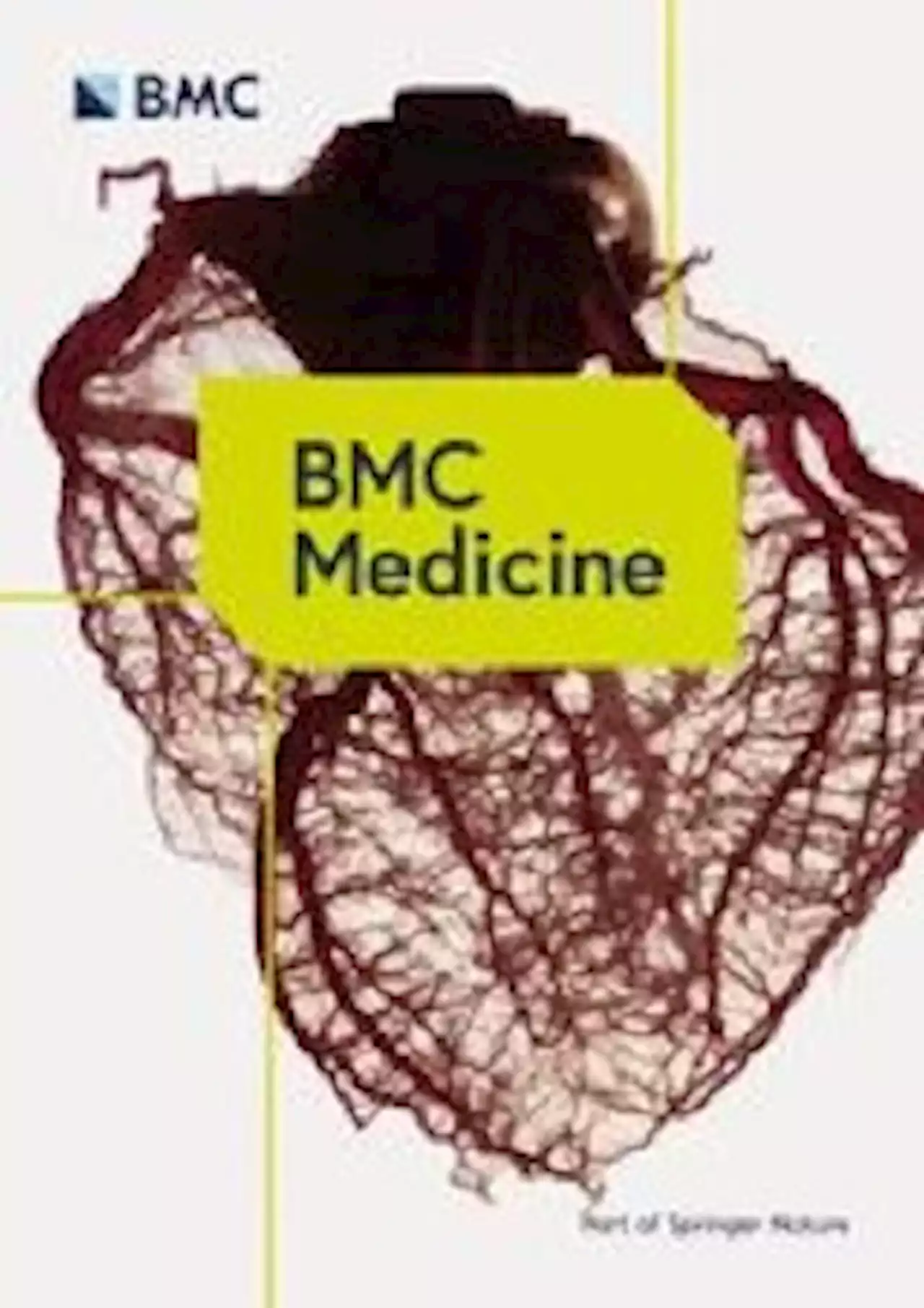A study published in BMCBiology discusses how mitochondrial genes in humans might have gone unnoticed and finds alternative mitochondrial peptides that may offer a new framework for the investigation of mitochondrial functions and diseases.
HeLa cells were washed with PBS and harvested in a lysing buffer containing 10 mM HEPES, 150 mM NaCl, and a cocktail of protease inhibitors . Cells were then lysed with a sonic dismembrator sonicator 3 times for 30 s before adding 100 µl of Triton X-100 10%. Cell lysates were incubated on ice for 20 min and then centrifuged for 15 min at 15,000 RPM at 4 °C. The supernatant was kept; 20 µl of protein A agarose was added to 1 ml of samples and incubated at 4 °C for 1 h.
For protein extraction, the bacterial lysates were incubated overnight with 100 µl of a 50% slurry of glutathione sepharose beads at 4 °C for pre-coupling. The beads were washed 3 times with PBS 1 × and the protein quantity assessed via a Bradford protein assay. HeLa or HEK-293 T cell lysates were then prepared as described above and pre-cleared using 50 µl of glutathione sepharose beads and 25 µg of GST protein for 2 h at 4 °C with end-over-end mixing.
The validation of a predicted interaction with the complement component 1q subcomponent binding protein was done via Western blot as described above , was diluted in a PBS + 0.05% tween-20 solution, and secondary antibody goat anti-mouse IgG coupled to the horseradish peroxidase was diluted in a PBS + 0.05% tween-20 solution) .HeLa or HEK-293 T cells were treated with complete synthetic MTALTND4 or water in DMEM low glucose buffer for 24, 48, and 72 h.
United Kingdom Latest News, United Kingdom Headlines
Similar News:You can also read news stories similar to this one that we have collected from other news sources.
 On Biology Low thyroid hormone levels may adapt brown bears to hibernation
On Biology Low thyroid hormone levels may adapt brown bears to hibernation
Read more »
 Nonmonotone invasion landscape by noise-aware control of metastasis activator levels - Nature Chemical BiologyLowering the levels of disease-promoting proteins is generally assumed to be beneficial. The authors developed a two-step strategy to integrate protein-level tuning, noise-aware synthetic gene circuits into a well-defined human genomic locus. This approach was used to study the effect of BACH1 levels on MDA-MB-231 human breast metastatic cells.
Nonmonotone invasion landscape by noise-aware control of metastasis activator levels - Nature Chemical BiologyLowering the levels of disease-promoting proteins is generally assumed to be beneficial. The authors developed a two-step strategy to integrate protein-level tuning, noise-aware synthetic gene circuits into a well-defined human genomic locus. This approach was used to study the effect of BACH1 levels on MDA-MB-231 human breast metastatic cells.
Read more »
 Change in habitual intakes of flavonoid-rich foods and mortality in US males and females - BMC MedicineBackground Higher baseline intakes of flavonoid-rich foods and beverages are associated with a lower risk of chronic disease and mortality in observational studies. However, associations between changes in intakes and mortality remain unclear. We aimed to evaluate associations between 8-year changes in intakes of (1) individual flavonoid-rich foods and (2) a composite measure (termed the ‘flavodiet’) of foods and beverages that are known to be main contributors to flavonoid intake and subsequent total and cause-specific mortality. Methods We evaluated associations between 8-year changes in intakes of (1) individual flavonoid-rich foods and (2) a novel ‘flavodiet’ score and total and cause-specific mortality. We included 55,786 females from the Nurses’ Health Study (NHS) and 29,800 males from the Health Professionals Follow-up Study (HPFS), without chronic disease at baseline in our analyses. Using multivariable-adjusted Cox proportional hazard models, we examined associations of 8-year changes in intakes of (1) flavonoid-rich foods and (2) the flavodiet score with subsequent 2-year lagged 6-year risk of mortality adjusting for baseline intakes. Data were pooled using fixed-effects meta-analyses. Results We documented 15,293 deaths in the NHS and 8988 deaths in HPFS between 1986 and 2018. For blueberries, red wine and peppers, a 5%, 4% and 9% lower risk of mortality, respectively, was seen for each 3.5 servings/week increase in intakes while for tea, a 3% lower risk was seen for each 7 servings/week increase [Pooled HR (95% CI) for blueberries; 0.95 (0.91, 0.99); red wine: 0.96 (0.93, 0.99); peppers: 0.91 (0.88, 0.95); and tea: 0.97 (0.95, 0.98)]. Conversely, a 3.5 servings/week increase in intakes of onions and grapefruit plus grapefruit juice was associated with a 5% and 6% higher risk of total mortality, respectively. An increase of 3 servings per day in the flavodiet score was associated with an 8% lower risk of total mortality [Pooled HR: 0.92 (0.89, 0.96)], and
Change in habitual intakes of flavonoid-rich foods and mortality in US males and females - BMC MedicineBackground Higher baseline intakes of flavonoid-rich foods and beverages are associated with a lower risk of chronic disease and mortality in observational studies. However, associations between changes in intakes and mortality remain unclear. We aimed to evaluate associations between 8-year changes in intakes of (1) individual flavonoid-rich foods and (2) a composite measure (termed the ‘flavodiet’) of foods and beverages that are known to be main contributors to flavonoid intake and subsequent total and cause-specific mortality. Methods We evaluated associations between 8-year changes in intakes of (1) individual flavonoid-rich foods and (2) a novel ‘flavodiet’ score and total and cause-specific mortality. We included 55,786 females from the Nurses’ Health Study (NHS) and 29,800 males from the Health Professionals Follow-up Study (HPFS), without chronic disease at baseline in our analyses. Using multivariable-adjusted Cox proportional hazard models, we examined associations of 8-year changes in intakes of (1) flavonoid-rich foods and (2) the flavodiet score with subsequent 2-year lagged 6-year risk of mortality adjusting for baseline intakes. Data were pooled using fixed-effects meta-analyses. Results We documented 15,293 deaths in the NHS and 8988 deaths in HPFS between 1986 and 2018. For blueberries, red wine and peppers, a 5%, 4% and 9% lower risk of mortality, respectively, was seen for each 3.5 servings/week increase in intakes while for tea, a 3% lower risk was seen for each 7 servings/week increase [Pooled HR (95% CI) for blueberries; 0.95 (0.91, 0.99); red wine: 0.96 (0.93, 0.99); peppers: 0.91 (0.88, 0.95); and tea: 0.97 (0.95, 0.98)]. Conversely, a 3.5 servings/week increase in intakes of onions and grapefruit plus grapefruit juice was associated with a 5% and 6% higher risk of total mortality, respectively. An increase of 3 servings per day in the flavodiet score was associated with an 8% lower risk of total mortality [Pooled HR: 0.92 (0.89, 0.96)], and
Read more »
 Association between periodontitis and osteoporosis in United States adults from the National Health and Nutrition Examination Survey: a cross-sectional analysis - BMC Oral HealthObjective This cross-sectional study aimed to investigate the association between periodontitis and osteoporosis among US adults as well as the subgroup of menopausal women. Background Periodontitis and osteoporosis are both chronic inflammatory diseases characterized by local or systemic bone resorption. Since they share many risk factors, and the significant decrease in estrogen along with menopause is unfavorable for both diseases, it’s reasonable to assume that there exists some links between the two diseases, especially during the menopause. Methods We analyzed data from the National Health and Nutrition Examination Survey (NHANES) 2009–2010 and 2013–2014. Periodontitis (defined according to the CDC/AAP definition) and osteoporosis (assessed by the dual-energy radiation absorptiometry) data were available for 5736 participants, and 519 subjects were enrolled in the subgroup of menopausal women aged 45–60 years old. We used binary logistic regression analysis to examine the association between the two diseases both in crude and fully adjusted model. Results In the fully adjusted model, osteoporosis was significantly associated with an increased risk of periodontal disease (OR:1.66, 95% CI: 1.00–2.77) in the whole population. As to the subgroup of menopausal women, osteoporosis group had an adjusted OR of 9.66 (95% CI: 1.13–82.38) for developing severe periodontitis in the fully adjusted model. Conclusions Osteoporosis is significantly associated with periodontitis and the association is even more pronounced in menopausal women with severe periodontitis.
Association between periodontitis and osteoporosis in United States adults from the National Health and Nutrition Examination Survey: a cross-sectional analysis - BMC Oral HealthObjective This cross-sectional study aimed to investigate the association between periodontitis and osteoporosis among US adults as well as the subgroup of menopausal women. Background Periodontitis and osteoporosis are both chronic inflammatory diseases characterized by local or systemic bone resorption. Since they share many risk factors, and the significant decrease in estrogen along with menopause is unfavorable for both diseases, it’s reasonable to assume that there exists some links between the two diseases, especially during the menopause. Methods We analyzed data from the National Health and Nutrition Examination Survey (NHANES) 2009–2010 and 2013–2014. Periodontitis (defined according to the CDC/AAP definition) and osteoporosis (assessed by the dual-energy radiation absorptiometry) data were available for 5736 participants, and 519 subjects were enrolled in the subgroup of menopausal women aged 45–60 years old. We used binary logistic regression analysis to examine the association between the two diseases both in crude and fully adjusted model. Results In the fully adjusted model, osteoporosis was significantly associated with an increased risk of periodontal disease (OR:1.66, 95% CI: 1.00–2.77) in the whole population. As to the subgroup of menopausal women, osteoporosis group had an adjusted OR of 9.66 (95% CI: 1.13–82.38) for developing severe periodontitis in the fully adjusted model. Conclusions Osteoporosis is significantly associated with periodontitis and the association is even more pronounced in menopausal women with severe periodontitis.
Read more »
 GraphSNP: an interactive distance viewer for investigating outbreaks and transmission networks using a graph approach - BMC BioinformaticsBackground Cluster and transmission analysis utilising pairwise SNP distance are increasingly used in genomic epidemiological studies. However, current methods are often challenging to install and use, and lack interactive functionalities for easy data exploration. Results GraphSNP is an interactive visualisation tool running in a web browser that allows users to rapidly generate pairwise SNP distance networks, investigate SNP distance distributions, identify clusters of related organisms, and reconstruct transmission routes. The functionality of GraphSNP is demonstrated using examples from recent multi-drug resistant bacterial outbreaks in healthcare settings. Conclusions GraphSNP is freely available at https://github.com/nalarbp/graphsnp . An online version of GraphSNP, including demonstration datasets, input templates, and quick start guide is available for use at https://graphsnp.fordelab.com .
GraphSNP: an interactive distance viewer for investigating outbreaks and transmission networks using a graph approach - BMC BioinformaticsBackground Cluster and transmission analysis utilising pairwise SNP distance are increasingly used in genomic epidemiological studies. However, current methods are often challenging to install and use, and lack interactive functionalities for easy data exploration. Results GraphSNP is an interactive visualisation tool running in a web browser that allows users to rapidly generate pairwise SNP distance networks, investigate SNP distance distributions, identify clusters of related organisms, and reconstruct transmission routes. The functionality of GraphSNP is demonstrated using examples from recent multi-drug resistant bacterial outbreaks in healthcare settings. Conclusions GraphSNP is freely available at https://github.com/nalarbp/graphsnp . An online version of GraphSNP, including demonstration datasets, input templates, and quick start guide is available for use at https://graphsnp.fordelab.com .
Read more »
 Inositol possesses antifibrotic activity and mitigates pulmonary fibrosis - Respiratory ResearchBackground Myo-inositol (or inositol) and its derivatives not only function as important metabolites for multiple cellular processes but also act as co-factors and second messengers in signaling pathways. Although inositol supplementation has been widely studied in various clinical trials, little is known about its effect on idiopathic pulmonary fibrosis (IPF). Recent studies have demonstrated that IPF lung fibroblasts display arginine dependency due to loss of argininosuccinate synthase 1 (ASS1). However, the metabolic mechanisms underlying ASS1 deficiency and its functional consequence in fibrogenic processes are yet to be elucidated. Methods Metabolites extracted from primary lung fibroblasts with different ASS1 status were subjected to untargeted metabolomics analysis. An association of ASS1 deficiency with inositol and its signaling in lung fibroblasts was assessed using molecular biology assays. The therapeutic potential of inositol supplementation in fibroblast phenotypes and lung fibrosis was evaluated in cell-based studies and a bleomycin animal model, respectively. Results Our metabolomics studies showed that ASS1-deficient lung fibroblasts derived from IPF patients had significantly altered inositol phosphate metabolism. We observed that decreased inositol-4-monophosphate abundance and increased inositol abundance were associated with ASS1 expression in fibroblasts. Furthermore, genetic knockdown of ASS1 expression in primary normal lung fibroblasts led to the activation of inositol-mediated signalosomes, including EGFR and PKC signaling. Treatment with inositol significantly downregulated ASS1 deficiency-mediated signaling pathways and reduced cell invasiveness in IPF lung fibroblasts. Notably, inositol supplementation also mitigated bleomycin-induced fibrotic lesions and collagen deposition in mice. Conclusion These findings taken together demonstrate a novel function of inositol in fibrometabolism and pulmonary fibrosis. Our study provides new evidence
Inositol possesses antifibrotic activity and mitigates pulmonary fibrosis - Respiratory ResearchBackground Myo-inositol (or inositol) and its derivatives not only function as important metabolites for multiple cellular processes but also act as co-factors and second messengers in signaling pathways. Although inositol supplementation has been widely studied in various clinical trials, little is known about its effect on idiopathic pulmonary fibrosis (IPF). Recent studies have demonstrated that IPF lung fibroblasts display arginine dependency due to loss of argininosuccinate synthase 1 (ASS1). However, the metabolic mechanisms underlying ASS1 deficiency and its functional consequence in fibrogenic processes are yet to be elucidated. Methods Metabolites extracted from primary lung fibroblasts with different ASS1 status were subjected to untargeted metabolomics analysis. An association of ASS1 deficiency with inositol and its signaling in lung fibroblasts was assessed using molecular biology assays. The therapeutic potential of inositol supplementation in fibroblast phenotypes and lung fibrosis was evaluated in cell-based studies and a bleomycin animal model, respectively. Results Our metabolomics studies showed that ASS1-deficient lung fibroblasts derived from IPF patients had significantly altered inositol phosphate metabolism. We observed that decreased inositol-4-monophosphate abundance and increased inositol abundance were associated with ASS1 expression in fibroblasts. Furthermore, genetic knockdown of ASS1 expression in primary normal lung fibroblasts led to the activation of inositol-mediated signalosomes, including EGFR and PKC signaling. Treatment with inositol significantly downregulated ASS1 deficiency-mediated signaling pathways and reduced cell invasiveness in IPF lung fibroblasts. Notably, inositol supplementation also mitigated bleomycin-induced fibrotic lesions and collagen deposition in mice. Conclusion These findings taken together demonstrate a novel function of inositol in fibrometabolism and pulmonary fibrosis. Our study provides new evidence
Read more »
